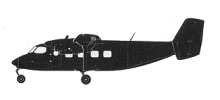Incident Overview
Description
Shortly after takeoff from Alma-Ata on the first leg of a flight to Moscow, the left engine developed a malfunction. The aircraft reached a height of 100 m before it began losing height and speed. The captain decided to make an emergency landing at the military airfield at Pervomaiski, 4.5 km north-west of Alma-Ata Airport but the aircraft hit a building, several trees and two telegraph poles. The aircraft crash-landed wheels-up and ran into another building. The causes of the disaster were: 1) Burnout of the air self-start valve of the 10th cylinder of the left engine due to poor maintenance, mistaken by the crew for a fire in the engine and leading to a single-engine flight at low altitude. 2) When performing a single-engine flight, the PIC made gross mistakes in the piloting technique: a) made a turn with a roll of 5 ø to an inoperative motor at a speed of 180-170 km / h at an altitude of 80-70 m; b) alternately gave afterburner to the right engine in the process of turning, which significantly increased the plane’s slip with a roll on the inoperative engine and led to a loss of altitude and speed. The pilot’s gross errors in piloting technique were aided by the fact that the co-pilot was in the left seat. The PIC has not been tested in piloting from the right seat since September 1952. Contributing reasons: 1) poor organization and condition of aircraft maintenance 2) unsatisfactory training of crews for single-engine flight and poor training of crews for flights in 151 AO. 3) poor discipline of the flight and technical personnel in the airport Alma-Ata.
Source of Information
http://airdisaster.ru/database.php?id=921http://airdisaster.ru/database.php?id=921Primary Cause
Burnout of the air self-start valve of the 10th cylinder of the left engine due to poor maintenance, mistaken for a fire in the engine and leading to a single-engine flight at low altitude.Burnout of the air self-start valve of the 10th cylinder of the left engine due to poor maintenance, mistaken for a fire in the engine and leading to a single-engine flight at low altitude.Share on:





